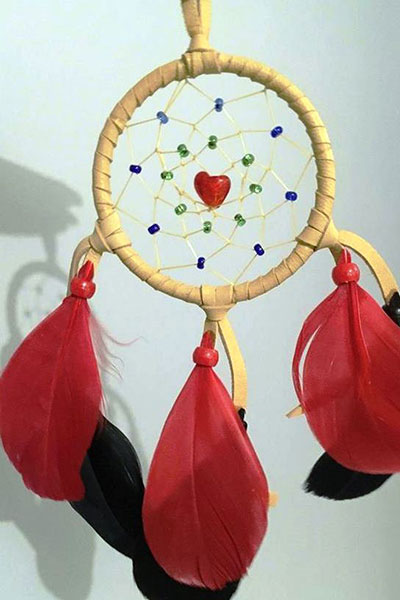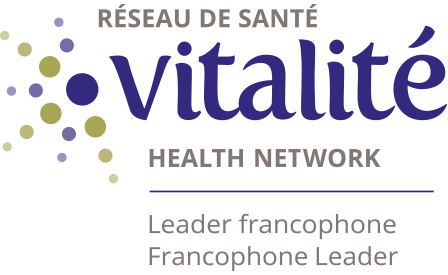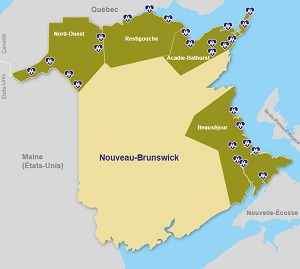First Nations

“Dreamcatcher” Model
In partnership with First Nations elders, the New Brunswick Fetal Alcohol Spectrum Disorder Centre of Excellence (FASD) has developed a holistic model of care dubbed “Dreamcatcher.” The model merges traditional Western medicine with First Nations’ science. This service delivery model supports the safety and wellness of individuals and their families. Together, we have been able to create a safe and compassionate space that allows individuals and their families to share their unique history and experiences and helps them reach a place of hope and healing.
Working with First Nations clients, families and communities affected by FASD means that culture and practices had to be integrated into service delivery in accordance with current best practices.
The Dreamcatcher model model also complies with the mandate and recommendations of the Truth and Reconciliation Commission of Canada: Calls to Action, more specifically, recommendations 33 and 34.
Dream Catcher
The FASD Dream Catcher service delivery model places the child and the family in the centre of the healing journey.
Objectives of the model
- Decolonize the centre’s current practices in a culturally appropriate and safe way that reflects the process of re-establishment of peace with First Nations by addressing the deeply rooted conflicts associated with FASD.
- Establish and cultivate respectful relations with the Mi’kmaq and Maliseet of the Province of New Brunswick.
- Support First Nations individuals with FASD as well as their families and communities.
- Design and establish healing and reconciliation models specific to First Nations in order to implement the recommendations of the Truth and Reconciliation Commission of Canada: Calls to Action and of the FASD Centre of Excellence.
- Promote change in communities and communicate the knowledge held by the FASD Centre of Excellence based on best practices.
- Address the personal, civic and administrative FASD-related conflicts for people living with FASD by implementing the peace process.
- Meet the needs of individuals with FASD where they live, learn, work and play so they can participate in society to the best of their ability throughout their lives.
The eight feathers of humanity were determined by the elders and incorporated into the Dreamcatcher. They represent:
- Respect;
- Courage;
- Honesty;
- Wisdom;
- Confident;
- Humility;
- Love;
- Spirit.
The Dreamcatcher puts clients, family, community and culture at the centre of the circle of services.
The Dreamcatcher model builds culturally appropriate relationships based on the Apigsigtoagen (peace process) theory and mitigates the silo-based work of the professionals involved. The model also empowers community workers interacting with clients. Given the complexity of FASD diagnosis, the Dreamcatcher model promotes collaboration and respect and leads to better service delivery for FASD clients.
The Dreamcatcher makes it possible to deliver front line health care that factors in the health determinants unique to First Nations and to identify gaps in order to prevent the secondary and tertiary side effects occurring when community services are lacking or do not meet the real needs of individuals with FASD. We hope to see tertiary care admissions drop, young people staying in school, and fewer people in trouble with the law. We above all hope that individuals with FASD will be able to remain in their families and communities so their cultural needs can be met.
The Dreamcatcher model is a living document, which means that it can and must change based on the changing needs of the family. The document will therefore have to be continually adapted to the changing needs of clients and their families. This is therefore a responsibility that we must all share to help support interdependence and ensure that individuals with FASD and their families have a solid and safe base.
The advantage of the Dreamcatcher model is that it can be incorporated into many other programs.
Elements that set the Dreamcatcher model apart from other models
1. Merging of traditional Western medicine with First Nations science (sharing of paradigms)
2. Inclusion of cultural practices and ceremonies
3. Recognition and support from 15 indigenous communities, the Public Health Agency of Canada, Accreditation Canada, and the Jordan Principle
4. Culturally appropriate and safe model
5. Acknowledgment of the 94 calls to action, more specifically numbers 33 and 34
6. Approach focused on prior trauma
7. Model accepted by Accreditation Canada as a best practice in January 2019
Referral Form
- Mi’kmaq Family Support
- MAWIW
- Indian Residential Schools Resolution Health Support Program
- Elsipogtog Health & Wellness Centre - Pamphlet
- Elsipogtog Health & Wellness Centre - Request For Services (to print)
Jordan's Principle

In Memory of Jordan River Anderson 1999-2004
Jordan’s Principle is a child-first principle named in memory of Jordan River Anderson, a First Nations child from Norway House Cree Nation in Manitoba. Born with complex medical needs, Jordan spent more than two years unnecessarily in hospital while the Province of Manitoba and the federal government argued who would pay for his at home care. Jordan died in the hospital at the age of five years old, never having spent a day in his family home (First Nations Caring Society, Jordan’s Principle, 2016).
What is Jordan’s Principle?
Jordan's Principle is a child-first principle meant to prevent all First Nations children from being denied essential services or experiencing delays in receiving them. Jordan's Principle:
- applies to all First Nations children (on or off reserve)
- involves all jurisdictional disputes, between federal departments or between federal and provincial governments
- provides payment for needed services by the government or department that first receives the request
Background
- In 2007, Parliament unanimously voted in favor of Jordan’s Principle, but the scope was limited and did not fully honor the commitment
- In a landmark ruling on January 26, 2016, the Canadian Human Rights Tribunal ordered the federal government to immediately stop applying a limited and discriminatory definition of Jordan’s Principle, and to immediately take measures to implement the full meaning and scope of the principle (First Nations Caring Society, Jordan’s Principle, 2016)
- In July 2016, the federal government made a commitment to fully implement Jordan’s Principle and reserved $382.5 million to hire service coordinators and to a fund called the Service Access Resolution Fund (SARF)
Are all First Nations children included under Jordan’s Principle?
Yes. All First Nations children 0-19 years old with an identified need for a publicly funded health, social or educational service or support are included, regardless of their health or social status, or place of residency (on or off reserve).
What services and supports are included?
If a First Nations child needs a publicly funded health, social or educational service or support that other Canadian children receive, and cannot access it through existing programs in the community, then it is an eligible service or support through the Child-First Initiative.
So far, coverage has been provided for a variety of services and supports, including:
- mental health services
- rehabilitative therapies (such as occupational therapy, speech-language pathology)
- medical supplies and equipment (that are not covered through NIHB)
- special education supports and services (like educational assistants)
- specialized assessments (such as psychoeducational assessments, Autism assessments)
How are local services being coordinated?
Local Service Coordinators will help identify First Nations children in need and act as the primary local contact for First Nations children and families. The Service Coordinators will work closely with communities and the regional Jordan’s Principle Focal Point contacts from Health Canada and INAC. Once referrals are received, service coordinators work with the family to determine what services are needed. If services are unavailable locally, then an application is made to the Service Access Resolution Fund (SARF) for funding, and services are started.
Who do families contact to get access to services and supports?
Anyone who is aware of a First Nation child who is not receiving the health and social services/supports that is needed is encouraged to contact their local service coordinator. There are 12 service coordinators in the Atlantic region, and four in New Brunswick.
Gloria Augustine-Kingsclear, St. Mary’s, Oromocto-gloriaaugustine.mawiw [at] efned.ca (902) 483-9980
Jennifer Perley- Woodstock, Tobique, Madawaska, jenniferperley.mawiw [at] efned.ca (506) 426-0352
Sheila Francis-Esgenoopetitj, Elsipogtog sheilafrancis.mawiw [at] efned.ca
(506) 993-0209
Katie O’Shea- Eel River Bar, Pabineau, Metepenagiag, Eel Ground, Indian Island, Buctouche and Fort Folly- koshea [at] mikmaqfamilysupport.com (506) 251-2402

